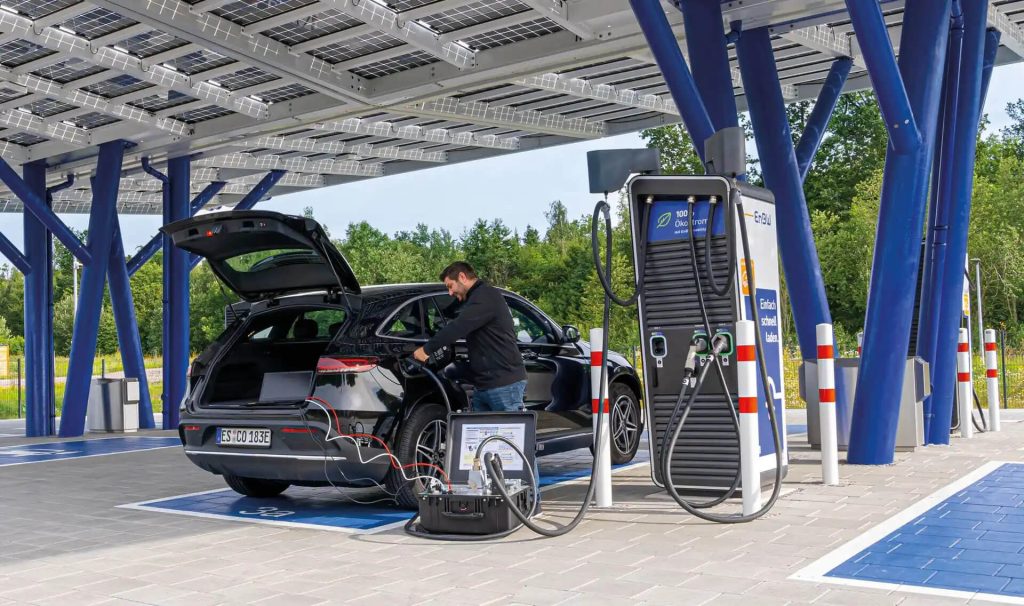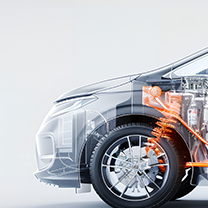
Products
Fast, Reliable, Everywhere

Solutions
Efficient, Innovative EV Charging Solutions.
As electric vehicles (EVs) continue to reshape the transportation landscape, one lingering question for many EV drivers and potential buyers is: Does DC fast charging damage the battery? While it’s true that charging speed can influence battery health, the reality is more reassuring than many headlines suggest.

Extensive research has shown that frequent use of DC fast charging has only a minimal effect on battery degradation. A widely cited study revealed that fast charging more than three times a month may increase battery wear by just 0.1%—a negligible amount in the grand scheme of an EV's lifecycle.
Moreover, battery temperature management, rather than charging speed alone, plays a more critical role in battery longevity. Lithium-ion (Li-ion) batteries are sensitive to extreme temperatures, but most modern EVs are equipped with intelligent thermal management systems that regulate internal battery temperatures during charging, including during DC fast charging.
DC fast charging, also known as Level 3 charging, provides rapid energy replenishment by delivering direct current (DC) straight to the battery, bypassing the vehicle’s onboard AC-DC converter. These chargers can deliver power between 50kW and 400kW, depending on the model and the EV's charging capabilities.
While this high power level significantly reduces charging time—often charging a battery to 80% in 20 to 40 minutes—it also generates more heat, which, if unmanaged, can contribute to battery stress. Fortunately, integrated cooling systems in both EVs and DC chargers help mitigate these risks.
Two notable studies highlight the impact:
These results indicate that while DC fast charging does increase battery wear slightly, the impact is relatively minor, especially when you factor in real-world driving habits.
DC fast charging is best used for:
For everyday charging, Level 2 AC chargers remain ideal. They’re more cost-effective, widely available, and gentler on the battery over time. Most EVs can fully charge overnight with AC, making it a practical and affordable option for daily commuting.
Industry experts, such as FastNed’s Head of Charging Technology Roland van der Put, have emphasized that most modern EV batteries are engineered with fast charging in mind. Integrated liquid or air-cooling systems ensure that batteries stay within the optimal temperature range of 25°C to 45°C, even during high-power charging sessions or extreme climates.
These systems not only protect the battery during fast charging, but also improve overall safety and performance in cold or hot weather.
To further protect your EV battery while enjoying the convenience of fast charging:
Just like all rechargeable batteries, EV batteries naturally lose some capacity over time. On average, this loss is about 2.3% per year, which is often imperceptible for everyday use.
Frequent DC charging may slightly increase this rate, but the difference—around 0.1% more capacity loss annually—is not enough to dramatically affect your EV’s performance or longevity.
In short: No, it isn’t.
When used responsibly and in combination with best practices, DC fast charging is a safe and essential part of EV ownership. It allows for greater flexibility and convenience without significantly compromising battery health.
As EV technologies continue to evolve, including improvements in battery chemistry and thermal management, the impact of fast charging will become even less of a concern.
So go ahead—use that fast charger when you need it, and rest easy knowing your EV battery is built to handle it.
